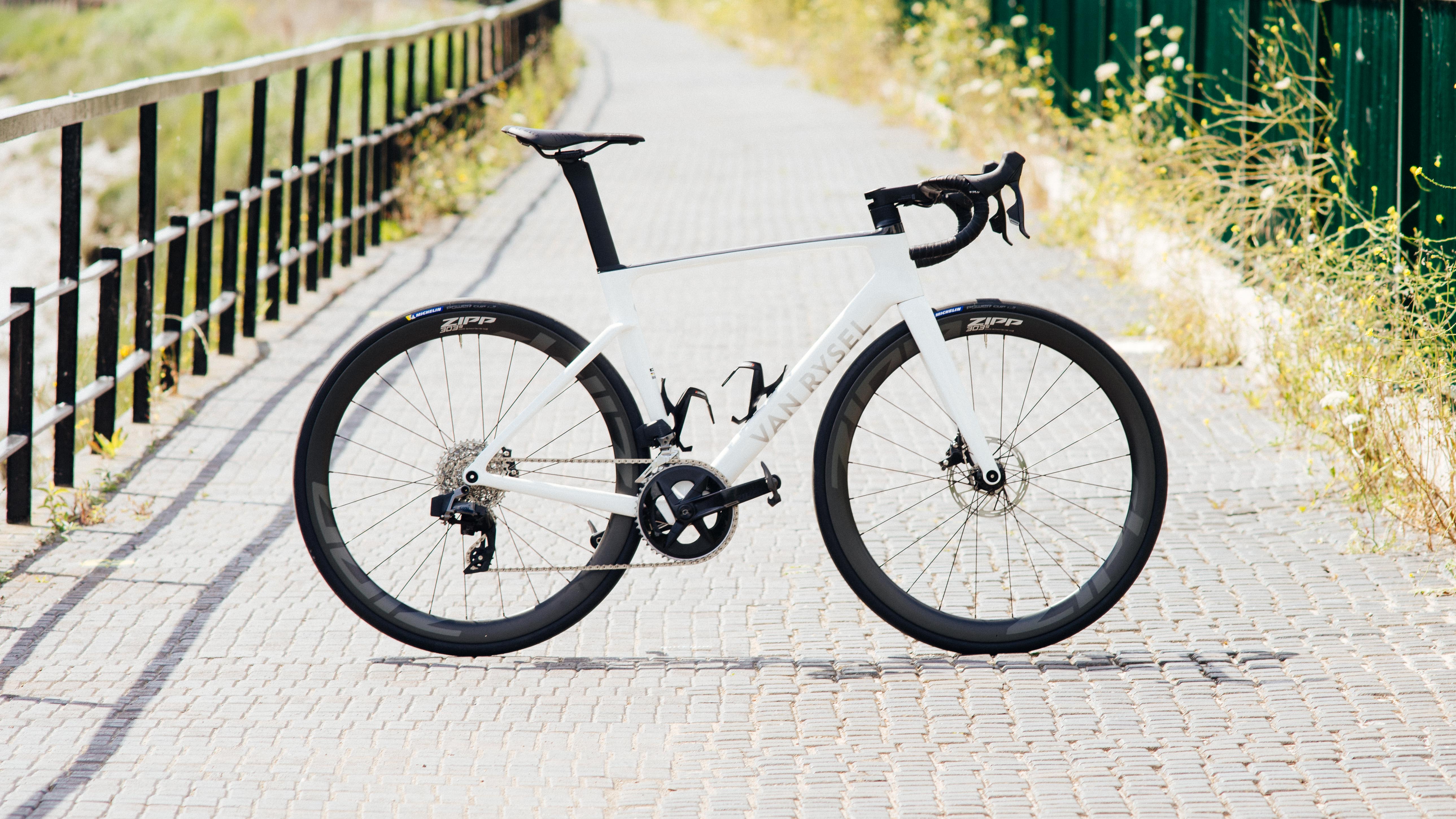Cyclingnews Verdict
A bike that casts off any 'budget' labels and places Van Rysel into a pool of far more established brands. Lively, responsive handling, but the bars are too wide and the seatpost can slip.
Pros
- +
Balanced, responsive handling
- +
Excellent tyres, despite their low RRP
- +
A good looking machine
Cons
- -
Slightly mushy ride feel
- -
Seatpost can slip
- -
Better value to be had elsewhere
You can trust Cyclingnews
The arrival of Van Rysel into the stable of WorldTour bikes has somewhat upset the apple cart. The brand is part of the multi-sport Decathlon empire, and so has a reputation for value. Given this is the first time the brand has appeared in the upper echelons of our sport it’s actually likely that ‘value’ may be the only thing you think of when you see the brand name. Value is often a word that goes hand in hand with compromise, with products (not just bikes) made to hit a certain price point.
The Van Rysel brand as a whole has been trying to steer a little clear of the value angle too, and the RSR is squarely aimed at the best road bikes segment, rather than a value-based consolation prize.
As with any bike I test though I’ve tried to remain impartial. I’ve been smashing about on the Rival-equipped RCR for a couple of months now, taking in inner city loops and back lane blasts. Impartial as I am, I’d be lying if I said I didn't have to park some preconceptions. Preconceptions which, I am pleased to report, the RCR has challenged.
It is a bike clearly benefiting from the trickle-down of tech from its more premium sibling, the RCR Pro, and while the Pro is in more rarified company, the £3,500-5000 segment of the market is substantially more competitive. How does it stack up? Let’s find out.
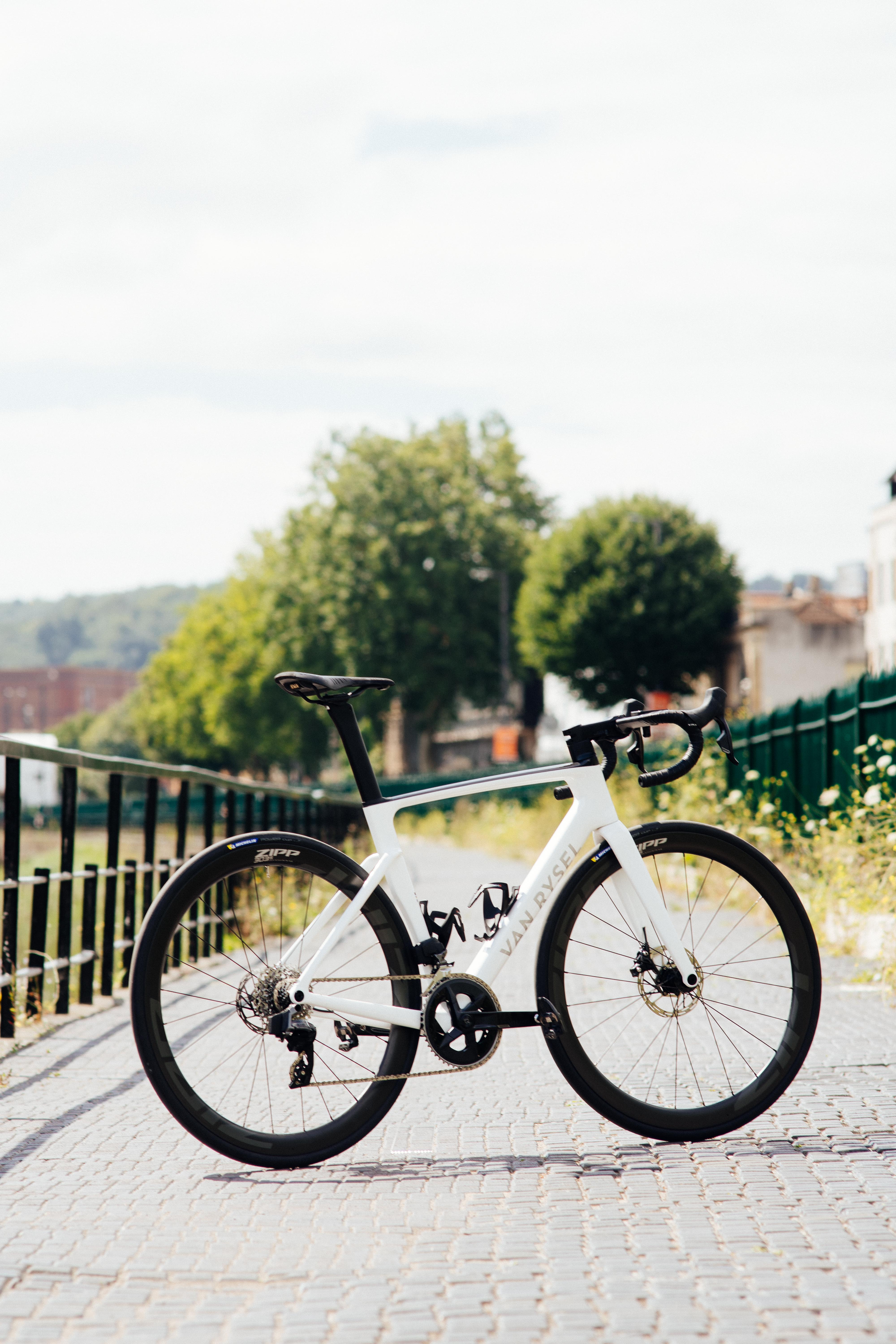
Design and aesthetics
Like I did, park any preconceived notions of the brand and have a look at the RCR. It's a good-looking bike, right? Slap any premium bike brand logo on the downtube and you wouldn’t bat an eye. While this version, the spec of which I’ll get into shortly, comes in three colour options I think this white with black accents is the neatest of the bunch. Blue is cool too, and I’ve no doubt that the all-black option will probably sell in the biggest numbers, but in terms of pro emulation you can’t beat white.
If you’re going to buy a carbon bike you should be able to see some carbon somewhere, so the top of the top tube is clearcoated raw carbon rather than black paint. It catches the light and is reminiscent of the Cannondale SuperSix Evo.
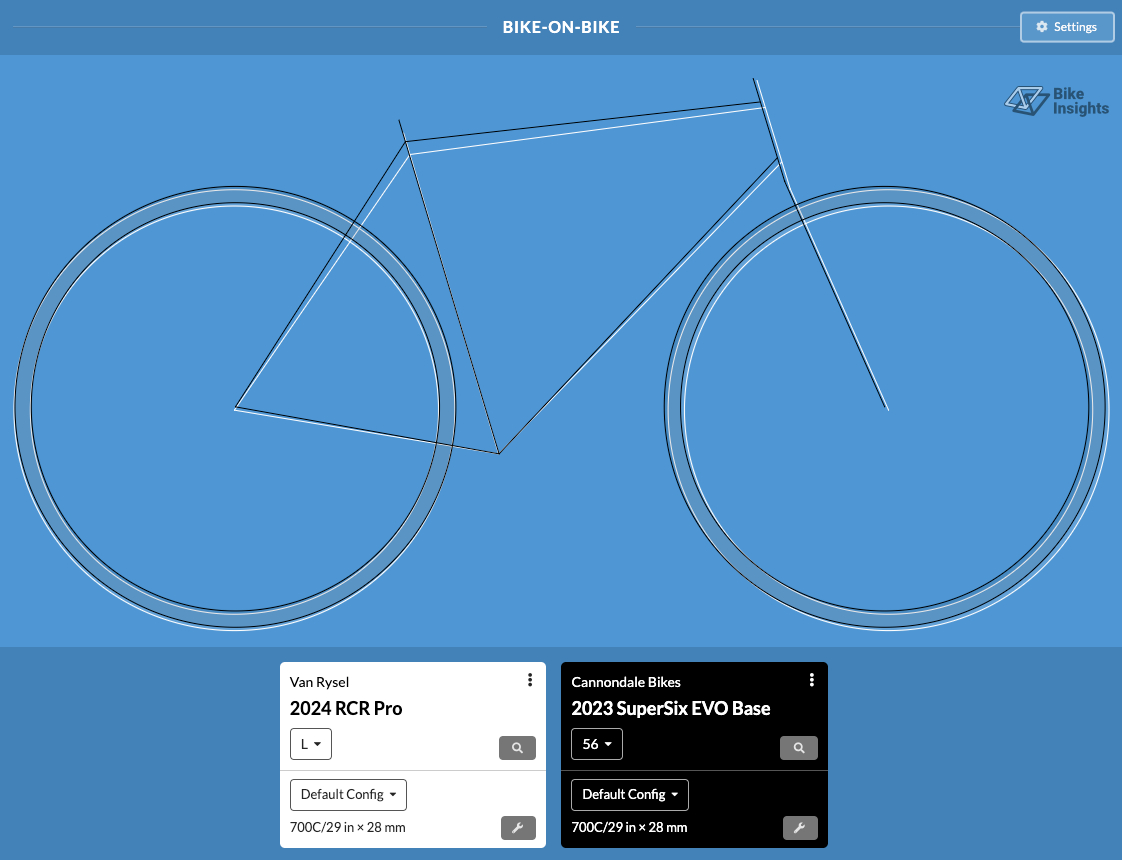
Geometrically it also mirrors the SuperSix pretty closely. Van Rysel was pretty upfront about the fact that it purchased one of each of the WorldTour bikes in order to develop the RCR Pro, and having overlain the geometry of a swathe of the peloton’s bikes over the RCR the one that is the closest match is the SuperSix. As we’ll get into, this is borne out in the ride characteristics too.
Clearly this is designed to be a do-it-all racer, though we have spotted a new race bike from Van Rysel that is an all-out aero machine. Its racy ambitions are reflected in the spec, too. The Sram Rival groupset comes equipped with a power meter, and the wheels are carbon Zipp 303s mated to Michelin Power Cup tyres. Both are budget-friendly offerings, but they show best how this bike has been specced. Sensibly, purposefully, but definitely with an eye on the RRP. The tyres are my favourite budget road tyres, they can be acquired cheaply and punch well above their weight.
One spec choice that I both like and don't like at the same time is the cockpit. While the likes of Canyon would spec an integrated cockpit, here at least there is a separate bar and stem from Deda in the from of the Superzero bar and a Van Rysel branded Deda Superbox stem. The cables aren’t fully integrated, though they do go through the bars meaning if you want to swap the bars you still need to disconnect and reassemble the brake lines.
Bizarrely for a 55cm bike, the bars are listed as a whopping 44cm wide. Deda does measure outside to outside rather than centre to centre, but even realising these are 42cm bars does little to alleviate the fact they are very wide, both for modern race bike trends and just for a bike of this size. It’s wattage left on the table, and my assumption is that wider bars were probably cheaper to buy wholesale due to lower demand.
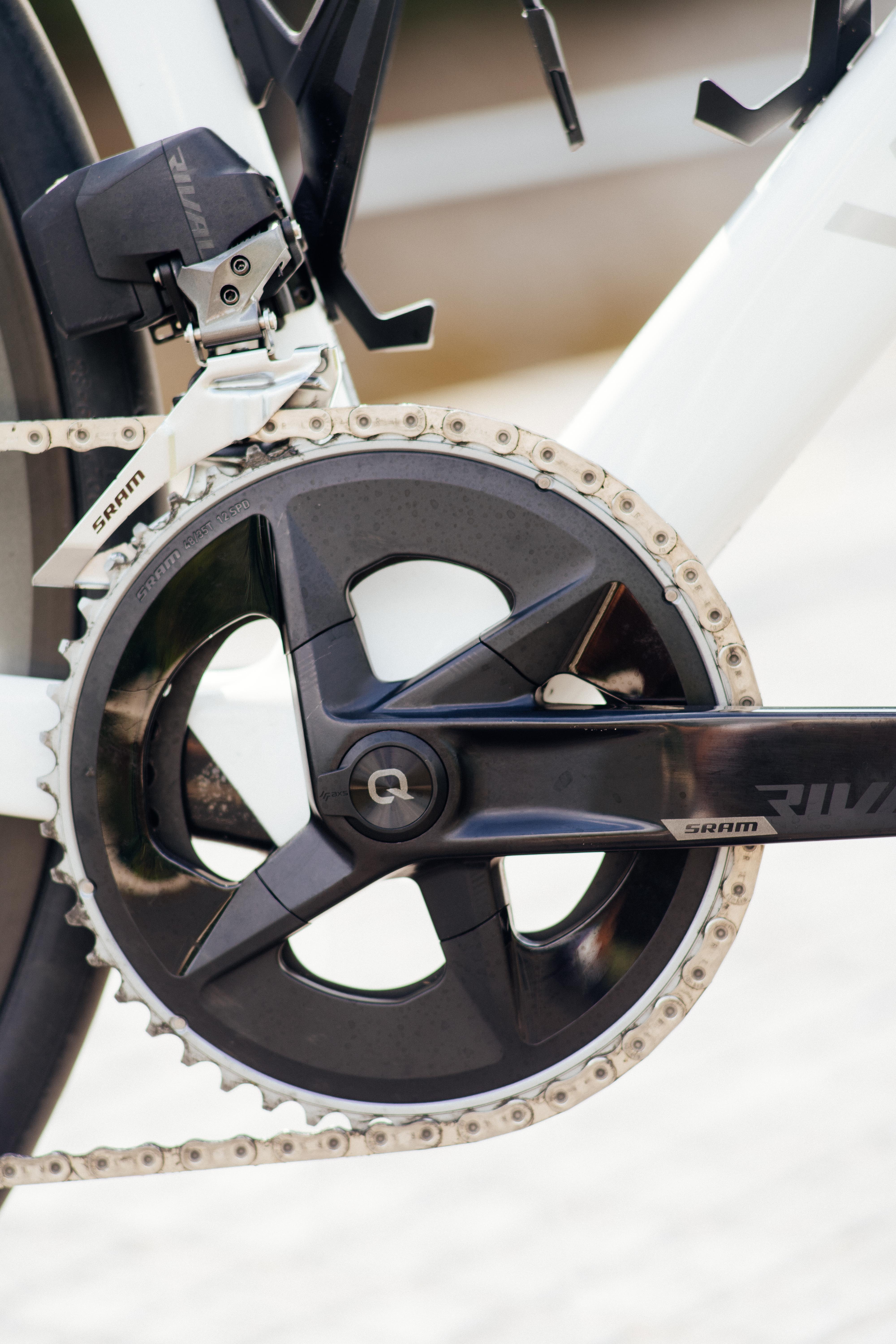
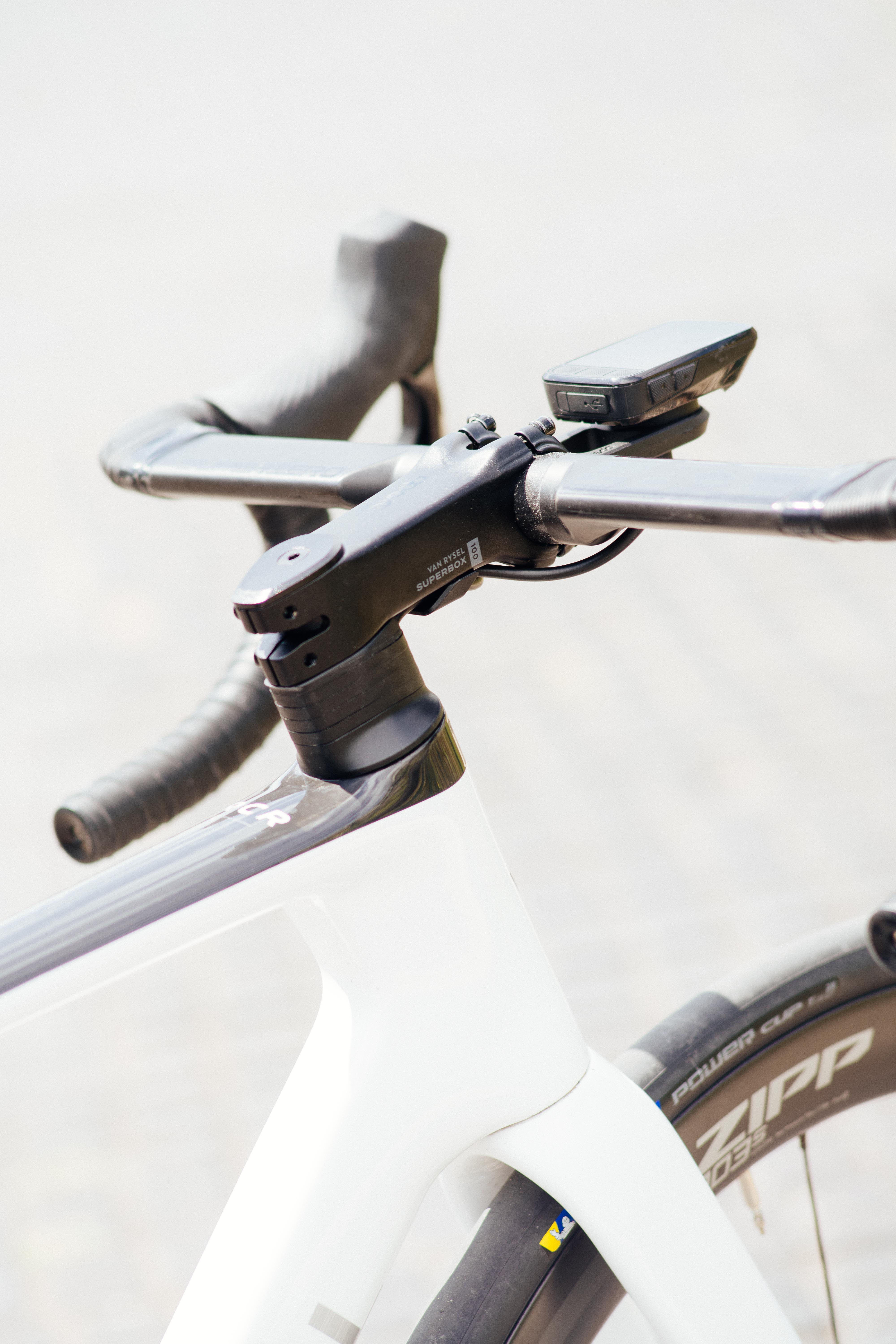
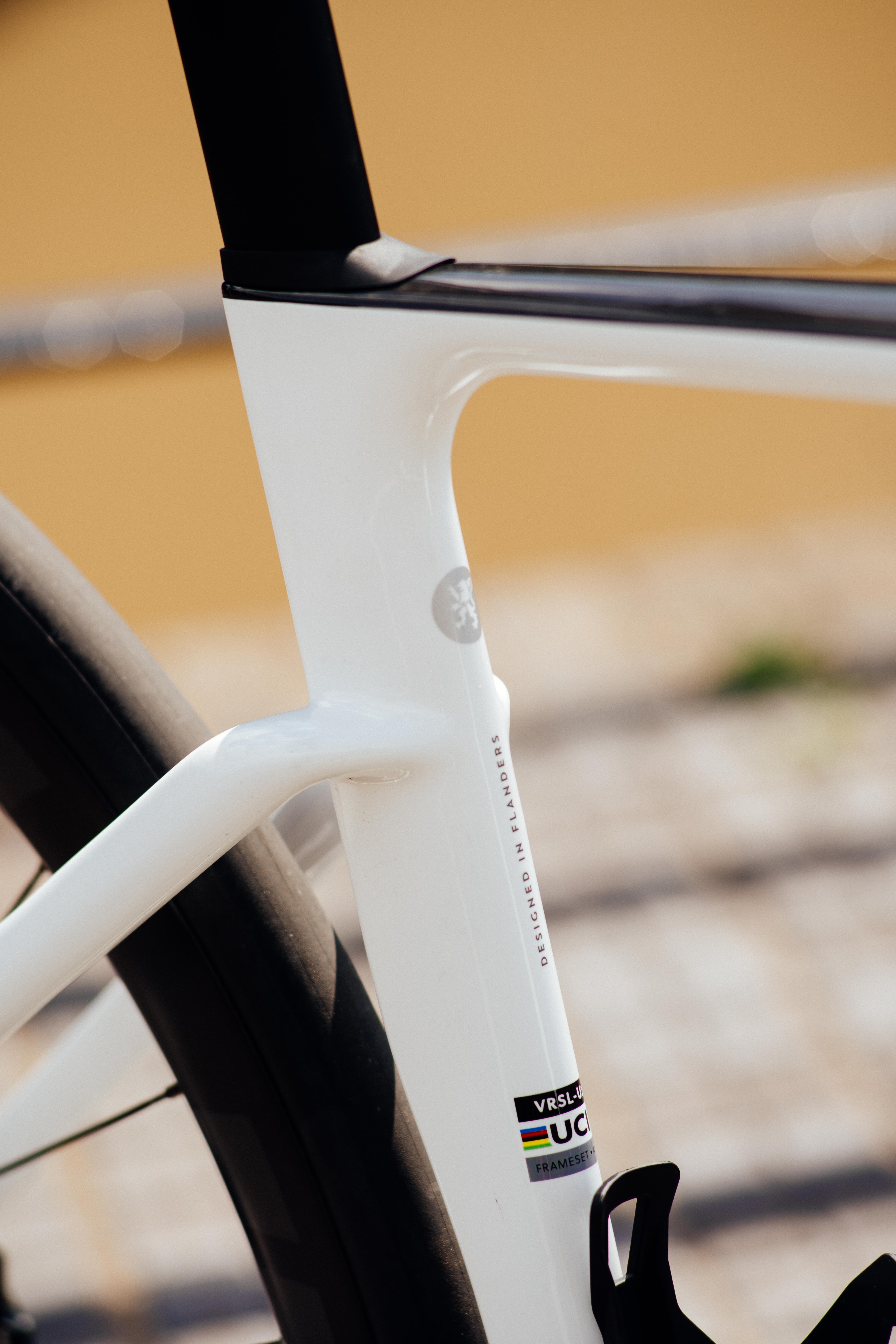
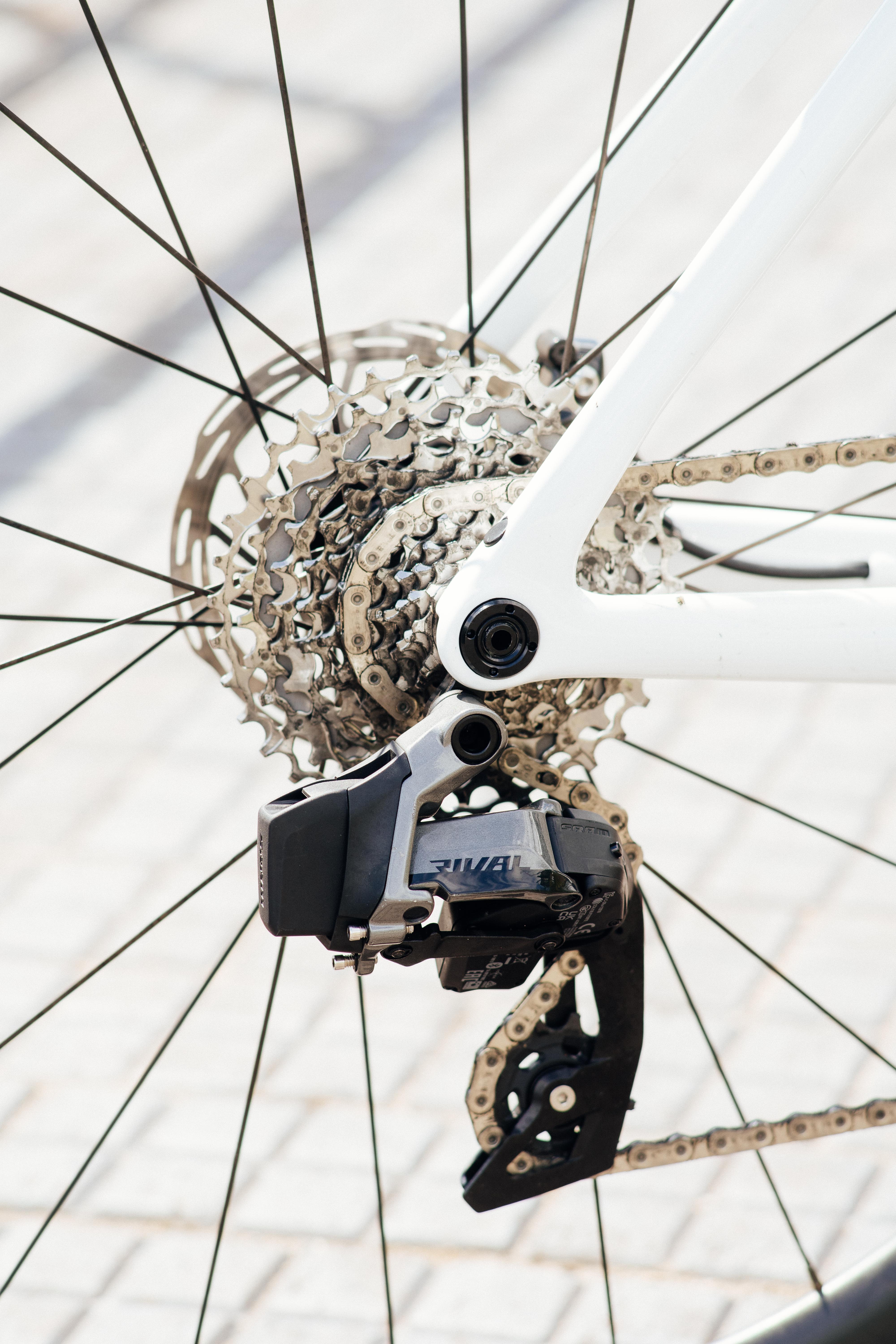
Performance
The Van Rysel RCR feels every bit the race bike. It doesn’t feel like it’s coming from a historically budget-focussed brand, and it’s wicked fast. As you might expect from the geometry charts it feels similar to the Cannondale SuperSix, which is high praise indeed. My test bike was a little smaller than the SuperSix I tested in Girona, so the handling was a little more snappy thanks to a shorter wheelbase, but on the whole, it’s a very balanced offering.
The front end is lively, and for me, the real hallmark of handling quality isn’t so much how hard you can corner but how readily you can change line while cornering hard. Here it’s a breeze, meaning you can pick your line and then if the mood takes you lean in even harder. This is aided by a great set of tyres, my favourite budget tyres as it happens. The Michelin Power Cup is a set I happily run on my own bikes despite their pretty low price, and while tyres are often a place where bikes are specced down (the Pinarello F7 is a clear example of this), this is a great choice here.
Without any hard aero data, I cannot be truly objective, but my average speeds on known loops were certainly faster than they have been recently. It’s hardly a scientific test, but it is a fast bike. It’d be a lot faster with some appropriately sized bars though, as even with the hoods turned illegally inwards I struggled to get into a position my narrow shoulders were happy with, and often time the B52-esque wingspan was an annoyance. It’s a relatively easy swap thanks to the use of a normal stem, but still… too wide.
The inclusion of a power meter is great if that’s your cup of tea. It isn’t mine, but if you want a fully kitted-out race bike then it’s a sensible inclusion that paired easily with my Wahoo and seemed to work pretty flawlessly. In the ‘Value’ section I’ll get into why it may not be the best inclusion, but you’ll have to wait a bit for that.
While it handles well, and was pretty comfortable, the road feedback was a little mushy feeling. A little muted. I have a feeling this is more to do with the tyres than anything else, set up as they were with butyl inner tubes, and I am confident fitting a more premium, tubeless set will alleviate this somewhat. Or changing out to latex inner tubes which I found provided a snappier ride feel. This is compounded slightly by the Rival groupset. It worked flawlessly, but the shifting, especially for the front derailleur, isn’t as crisp as Shimano 105, though this would of course increase the RRP.
An 8.5kg weight (with cages and pedals) is competitive enough for an all-rounder at this price, and combined with a relatively stiff bottom bracket it climbs well. The inline seatpost has more stickup than similar bikes of this size, and while that equates to more comfort the clamp did slip and was prone to creaking, requiring a little more torque than advised.
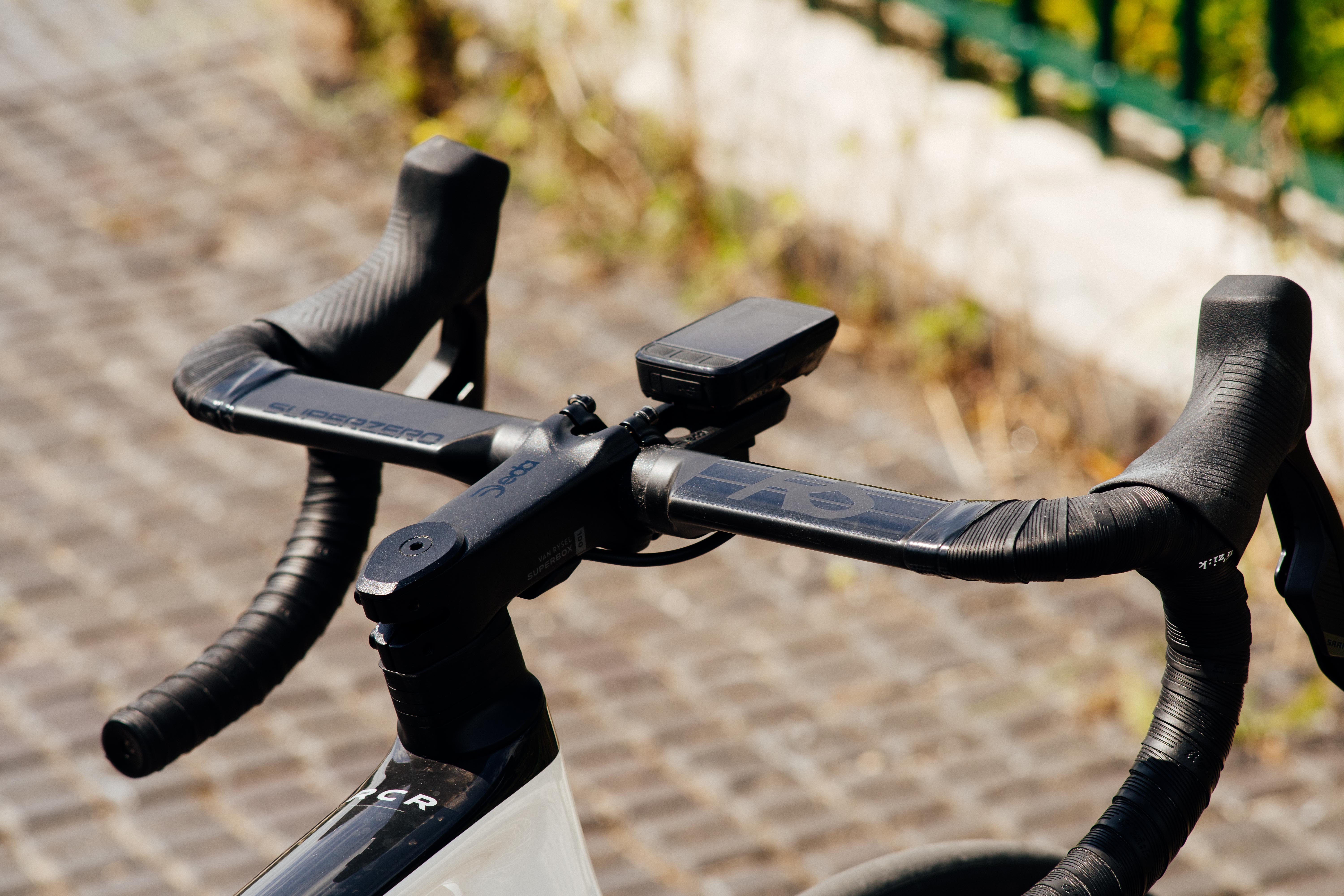
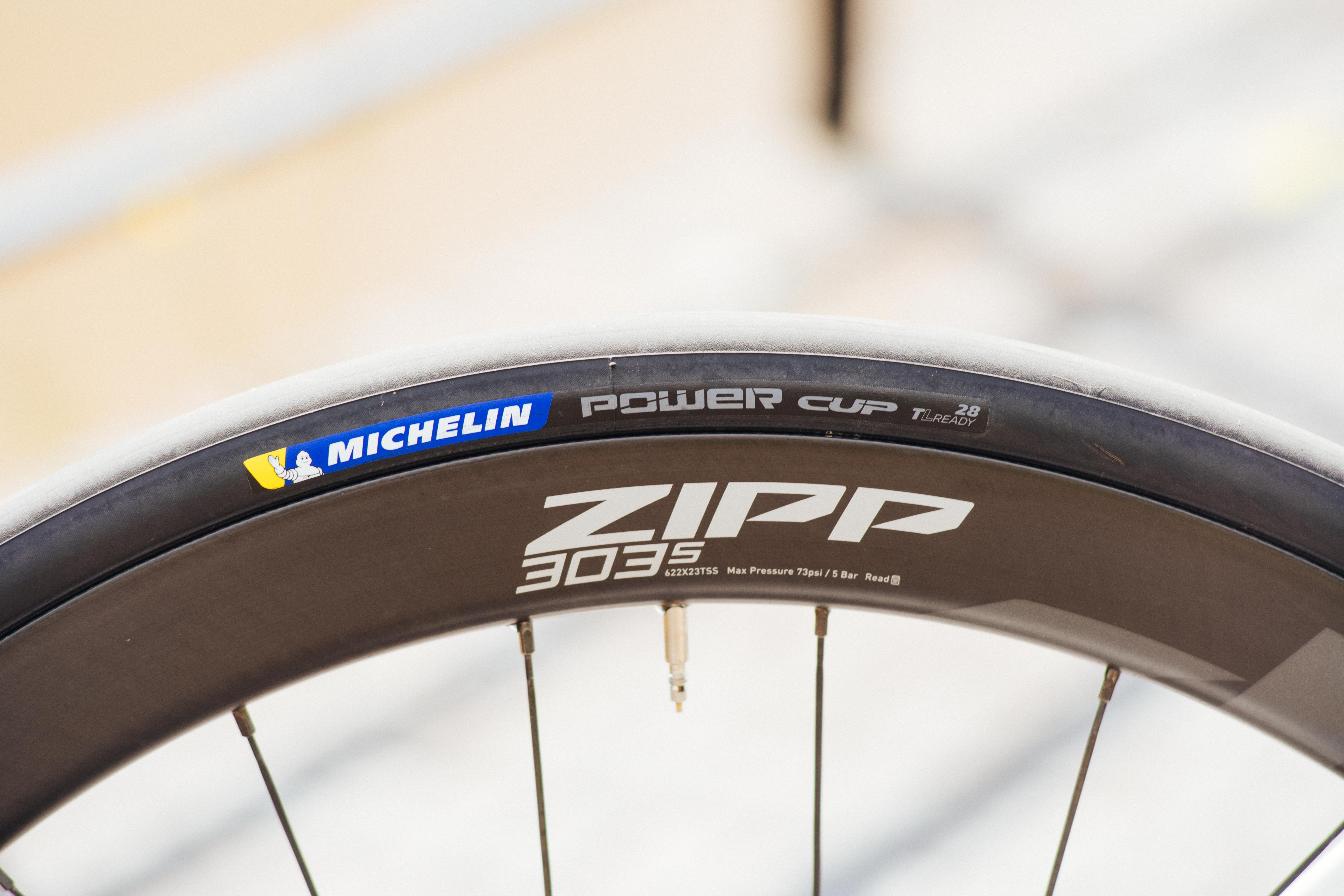
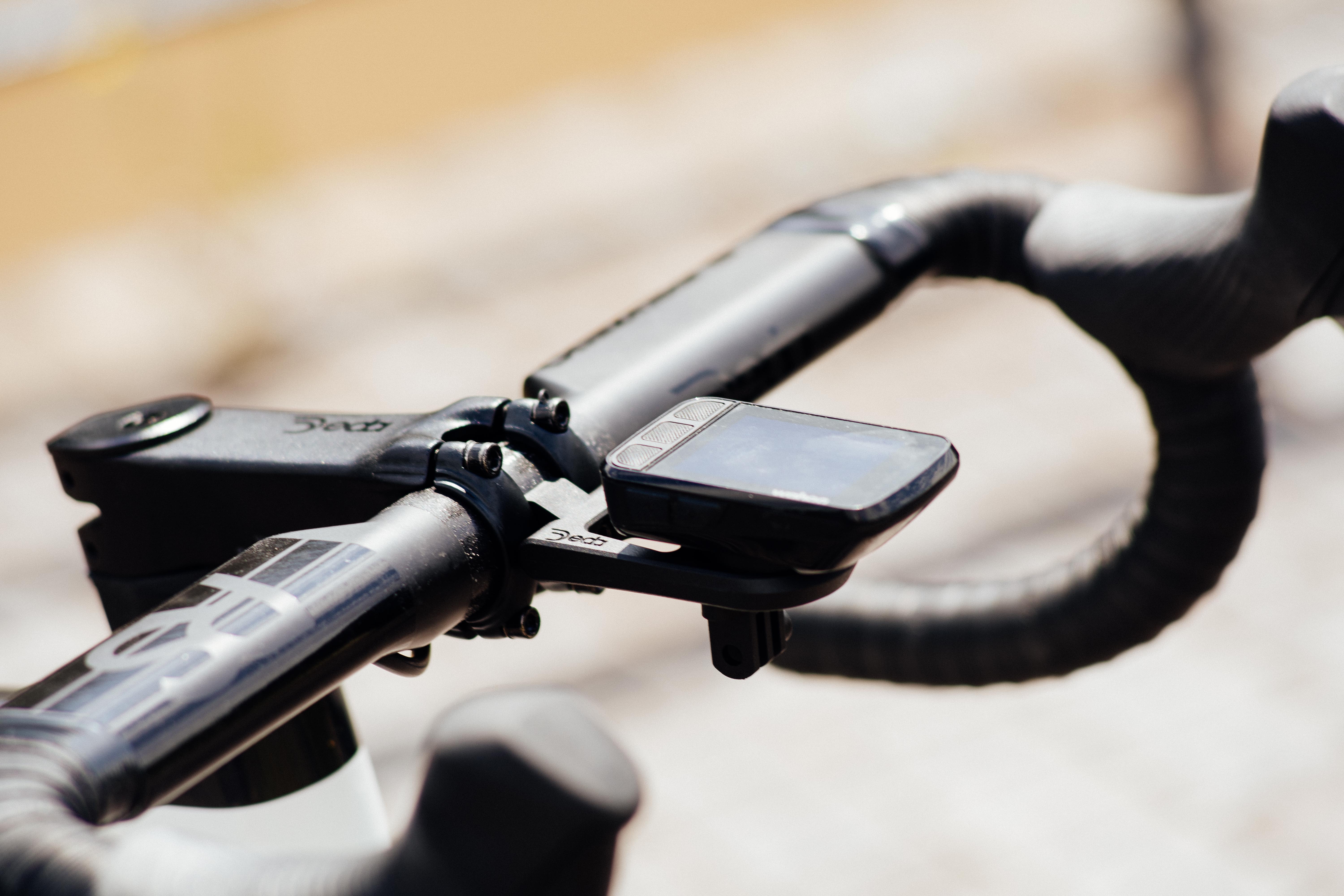
Value
This is where I expected the RCR to excel, and while I think it is pretty good value for the price I don’t think it’s market-leading. The RRP is £4,500, and for that, you get Sram Rival with a power meter, carbon wheels, and decent but budget tyres. The Canyon Ultimate in a similar spec, but with alloy wheels, is £3,450, so you could easily spend some of the change on a posh set of wheels, sell the alloy ones and come in a few hundred pounds under the RCR price.
Likewise, the new Canyon Aeroad comes in a spec with Rival, carbon DTSwiss wheels, and Continental GP5000 S TR tyres for £3,949. It doesn’t come with a power meter, but again you could buy a power-equipped Rival crankset, sell the stock one and come in noticeably under the Van Rysel.
So good, but not incredible, value. The RCR Pro is still the cheapest WorldTour bike out there, but that value proposition has yet to trickle down into the more competitive area of the market.
It's worth noting that if you were to buy this bike in Europe the price is €4,200, which is roughly £3,500. This swing of £1,000 is pretty drastic, and while I don't think this is a solution for everyone but you could book a holiday to France, pay for a ferry and a long weekend in a nice B&B, pick the bike up, and still have it come in cheaper than buying it from the UK.

Verdict
A great handling and good-looking bike that belies the brand's budget roots. While the tyres are good it’s probably worth swapping to posher ones when they run out to get a slightly better road feel, especially set up tubeless. Likewise, the bars are something I’d be very fast to swap given their width. A good bike that justifies its newfound place amongst the big players well, though perhaps falls short of the value score that its more premium model, the RCR Pro, teases for the whole range.
| Attributes | Notes | Rating |
|---|---|---|
| Design and aesthetics | An attractive, and noticeably premium aesthetic from the budget brand, with sorted geometry to boot | 8/10 |
| Build | Everything is pretty sound, with the exception of very wide bars. As budget tyres go these are the best you're going to find. Some seatpost slippage though. | 7/10 |
| Performance | Fast, lively, with handling that mirrors that of the Cannondale SuperSix, which is high praise | 9/10 |
| Weight | Competitive, but not class leading | 8/10 |
| Value | Sadly not as good value as the brand name would suggest, though it's still decent in this regard. Much better value in Europe. | 8/10 |
| Overall rating | Row 5 - Cell 1 | 80% |

Will joined the Cyclingnews team as a reviews writer in 2022, having previously written for Cyclist, BikeRadar and Advntr. He’s tried his hand at most cycling disciplines, from the standard mix of road, gravel, and mountain bike, to the more unusual like bike polo and tracklocross. He’s made his own bike frames, covered tech news from the biggest races on the planet, and published countless premium galleries thanks to his excellent photographic eye. Also, given he doesn’t ever ride indoors he’s become a real expert on foul-weather riding gear. His collection of bikes is a real smorgasbord, with everything from vintage-style steel tourers through to superlight flat bar hill climb machines.
